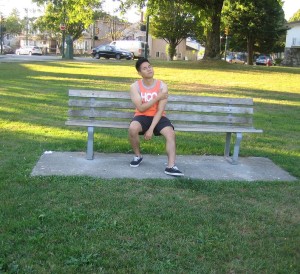An AC joint separation is described as an injury involving the ligament that supports the acromioclavicular joint. This injury is typically triggered when an individual falls onto an extended arm whether during sports or while at work or home.
Symptoms
The indications of an AC joint separation usually include pain at the end of the collarbone. The pain can cover the shoulder area initially but becomes localized later. The pain tends to worsen when the individual attempts to move the arm above the shoulder. In most cases, swelling is often present and a deformity is evident depending on the extent of the injury sustained. This is usually an apparent bump where the joint has been disrupted and strikingly visible in severe cases.

How the injury is graded
An AC joint separation is graded from 1-6 using the Rockwood scale that categorizes an injury based on the extent of damage on the ligament and the space between the acromion and the clavicle.
- Grade 1 is a simple injury to the AC joint with minimal damage to the ligament and there is no separation of the bones.
- Grade 2 involves rupture of the AC ligament.
- Grade 3 involves the rupture of both the AC ligament and coracoclavicular (CC) ligament that often leads to an upward displacement of the clavicle.
At this point, the grade and scale of injury will depend on the degree of clavicle displacement.
- Grade 4 involves backward or posterior displacement.
- Grade 5 involves superior displacement and there is an increase in the coracoclavicular space by 3-5 times than normal. In addition, there is a step deformity that is evident in grade 3-5 injuries.
- Grade 6 involves complete rupture of both AC and CC ligaments and the clavicle is displaced downwards.
Management of AC joint separation
The first aid care for any AC joint injury is to instruct the individual to rest and apply an ice pack. The affected shoulder must be immobilized in a sling to reduce the pain by taking the weight off the arm. In case a severe injury is not treated correctly, it can lead to lasting deformity in which a lump develops on the upper part of the shoulder. To learn to recognize and manage joint injuries including AC joint separation, enroll in a first aid class today.
When a sports injury professional is consulted, grade 1-3 injuries are usually managed conservatively without surgery. As for grade 3 injuries that do not respond to treatment and grade 4-6 injuries, they require surgery. In some cases, taping of the AC joint helps fix and support the joint to promote the healing process. The affected joint requires taping for 2-3 weeks. In addition, ultrasound is used for minor injuries while TENS provides pain relief in severe cases.
Lastly, the doctor usually prescribes anti-inflammatory medications such as ibuprofen to help minimize the inflammation and pain. Additionally, exercises specific for AC joint separation must be started.
